OTRĀ SEMESTRA NOSLĒGUMA TESTI
Watch the next part of the video. Then read and learn about the Tower of London and St. Paul's Cathedral.
(Noskaties nākamo video daļu! Tad lasi un mācies par Taueru un Svētā Pāvila katedrāli!)
- The Tower of London
The Tower of London, officially Her Majesty's Royal Palace and Fortress of the Tower of London, is a historic castle located on the north bank of the River Thames in central London. It lies within the London Borough of Tower Hamlets, which is separated from the eastern edge of the square mile of the City of London by the open space known as Tower Hill. It was founded towards the end of 1066 as part of the Norman Conquest of England. The White Tower, which gives the entire castle its name, was built by William the Conqueror in 1078. The castle was used as a prison from 1100 until 1952, although that was not its primary purpose. A grand palace early in its history, it served as a royal residence. As a whole, the Tower is a complex of several buildings set within two concentric rings of defensive walls and a moat.
The Tower of London has played a large role in English history. It was besieged several times, and controlling it has been important to controlling the country. The Tower has served variously as an armoury, a treasury, a menagerie, the home of the Royal Mint, a public record office, and the home of the Crown Jewels of England.
There is a legend about ravens in the fortress. It said that the kingdom will fall if the ravens ever leave the fortress. So at least six ravens are kept at the Tower at all times. They are under the care of the Ravenmaster, one of the Yeoman Warders better known by their nice name – Beefeaters. As well as having ceremonial duties, the Yeoman Warders provide guided tours around the Tower.
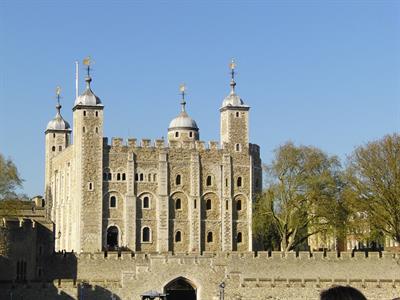
the Tower of London — [ˈtaʊər.ɒv ˈlʌn.dən] — Tauers vai Londonas Tauers
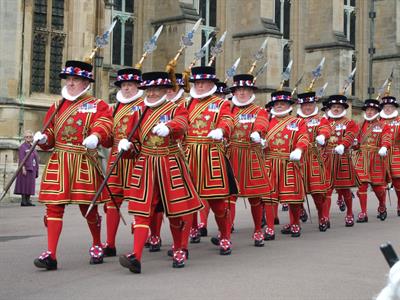
Yeoman Warder — [ˈjəʊ.mənˈwɔː.dər] — Tauera sargs, jomeņu gvards
Beefeater — [ˈbiːˌfiː.tər] — bīfīters
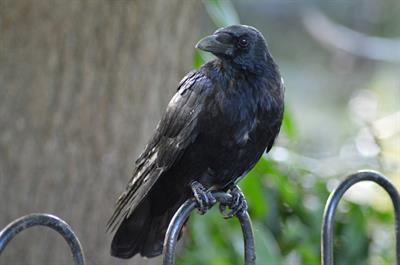
raven — [ˈreɪ.vən] — krauklis
- St Paul's Cathedral
St Paul's Cathedral, London, is an Anglican cathedral, the seat of the Bishop of London and the mother church of the Diocese of London. Its dedication to Paul the Apostle dates back to the original church on this site, founded in AD 604. The present cathedral, dating from the late 17th century, was designed in the English Baroque style by Sir Christopher Wren.
The cathedral is one of the most famous and most recognisable sights of London. Its dome, framed by the spires of Wren's City churches, has dominated the skyline for over 300 years. At 111 metres high, it was the tallest building in London from 1710 to 1967. The dome is among the highest in the world. St Paul's is the second-largest church building in area in the United Kingdom after Liverpool Cathedral.
Services held at St Paul's have included the funerals of Admiral Nelson, Winston Churchill and Margaret Thatcher; jubilee celebrations for Queen Victoria; peace services marking the end of the First and Second World Wars; the wedding of Prince Charles and Lady Diana Spencer; and the thanksgiving services for the Silver, Golden and Diamond Jubilees and the 80th and 90th birthdays of Queen Elizabeth II.
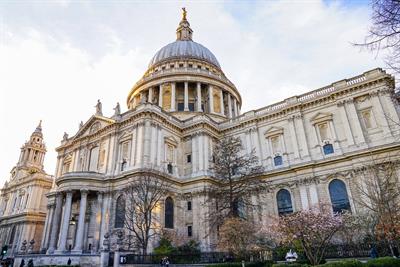
St. Paul's Cathedral — [.seɪnt.pɔːlz.kəˈθiː.drəl] — Svētā Pāvila katedrāle
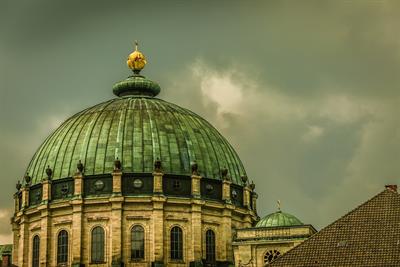
dome — [dəʊm] — kupols, velve
Atsauce:
https://www.youtube.com/watch?v=qaBZPI7If14
https://www.visitlondon.com/